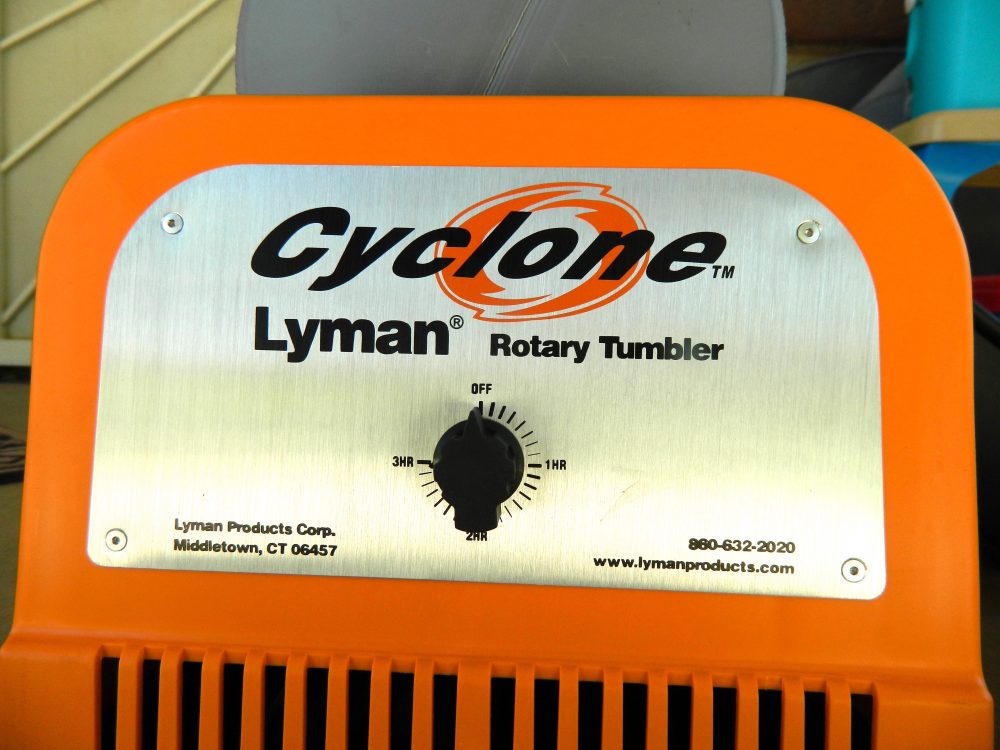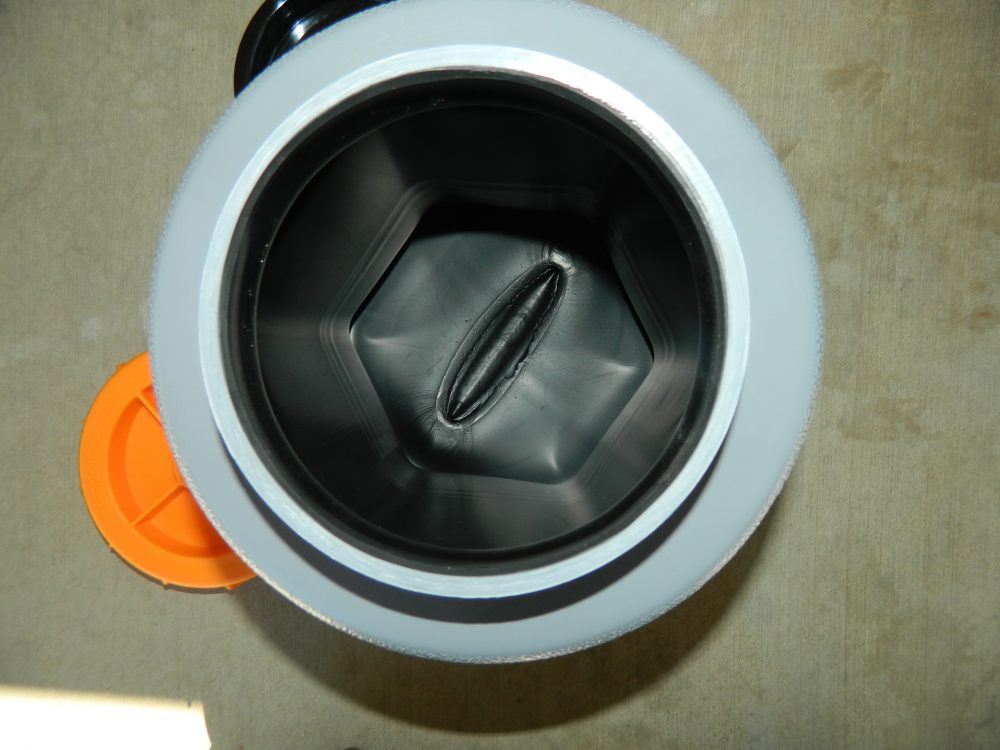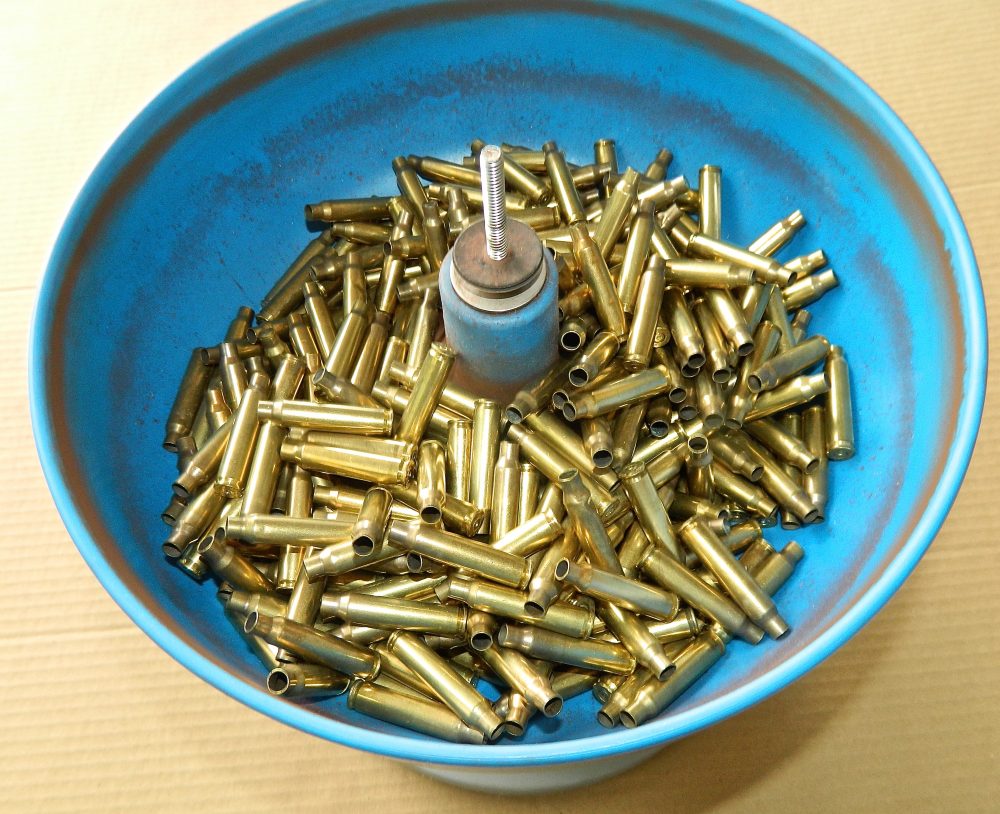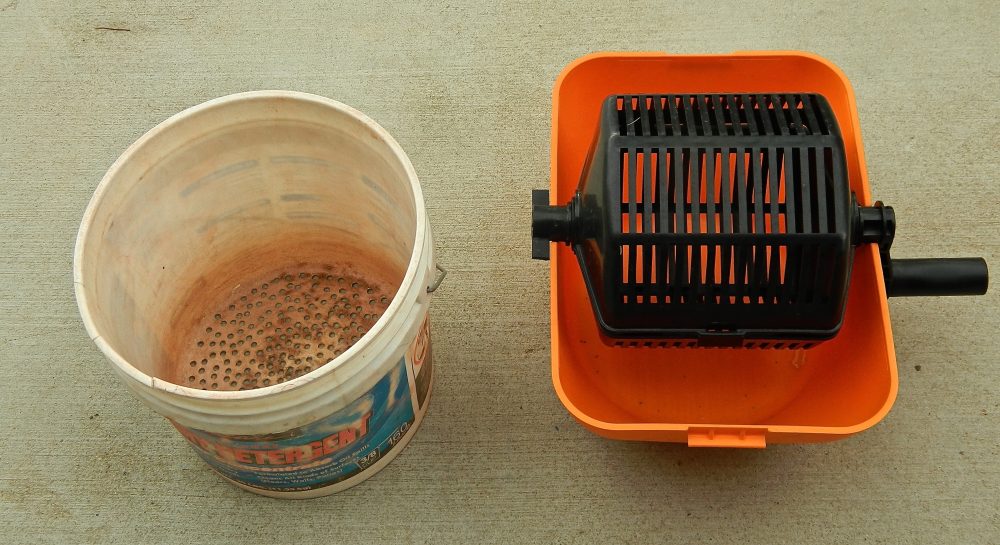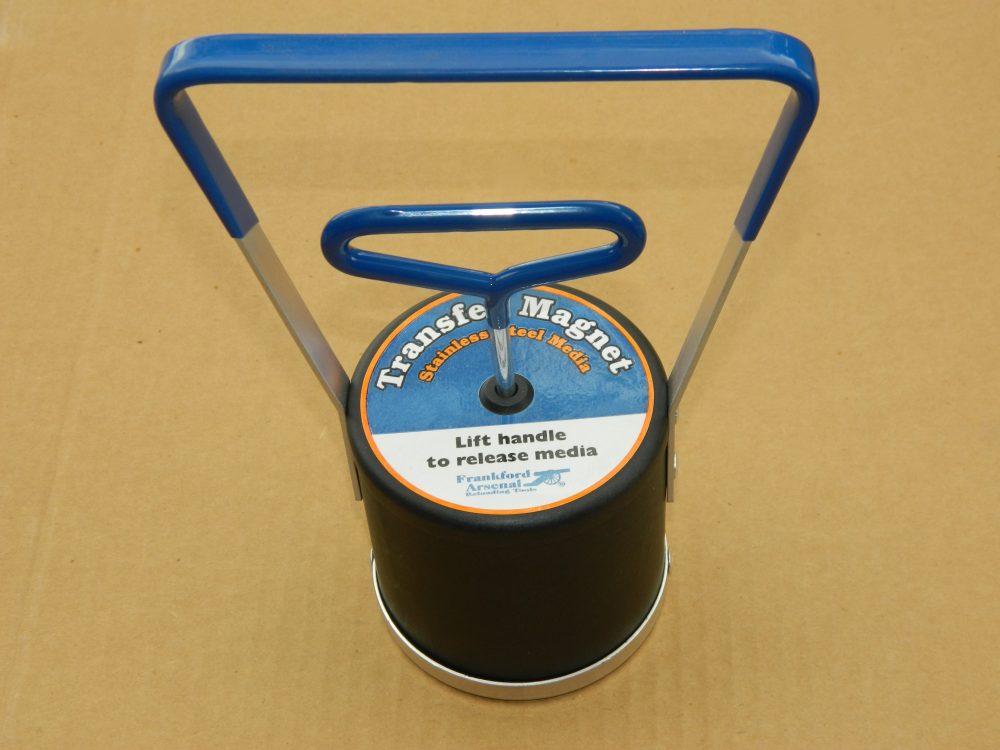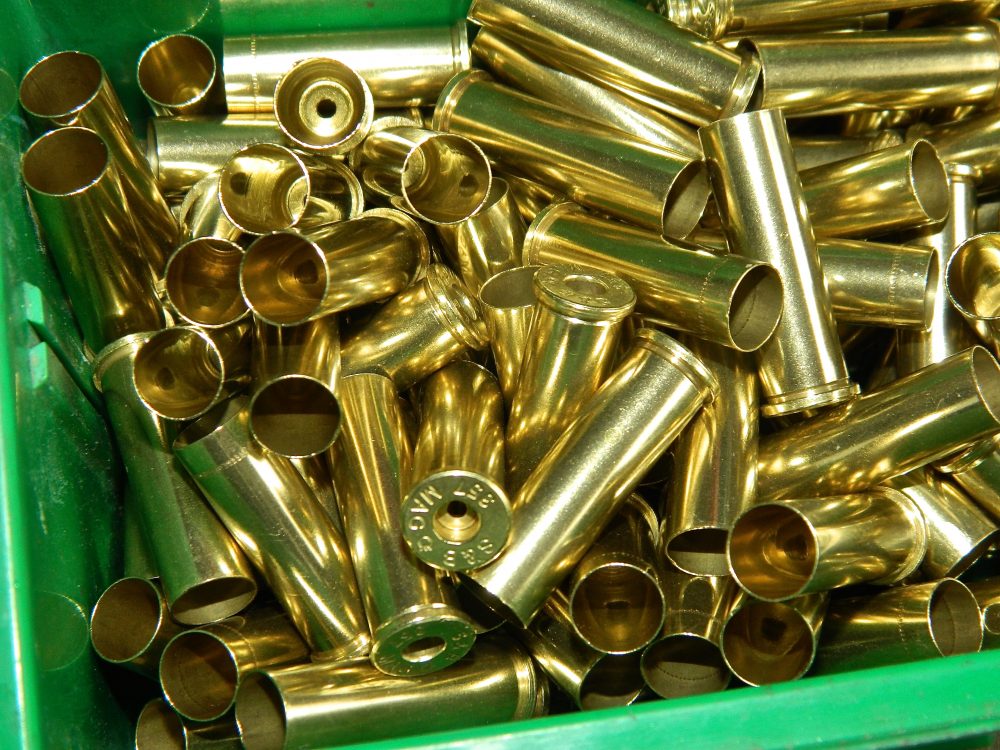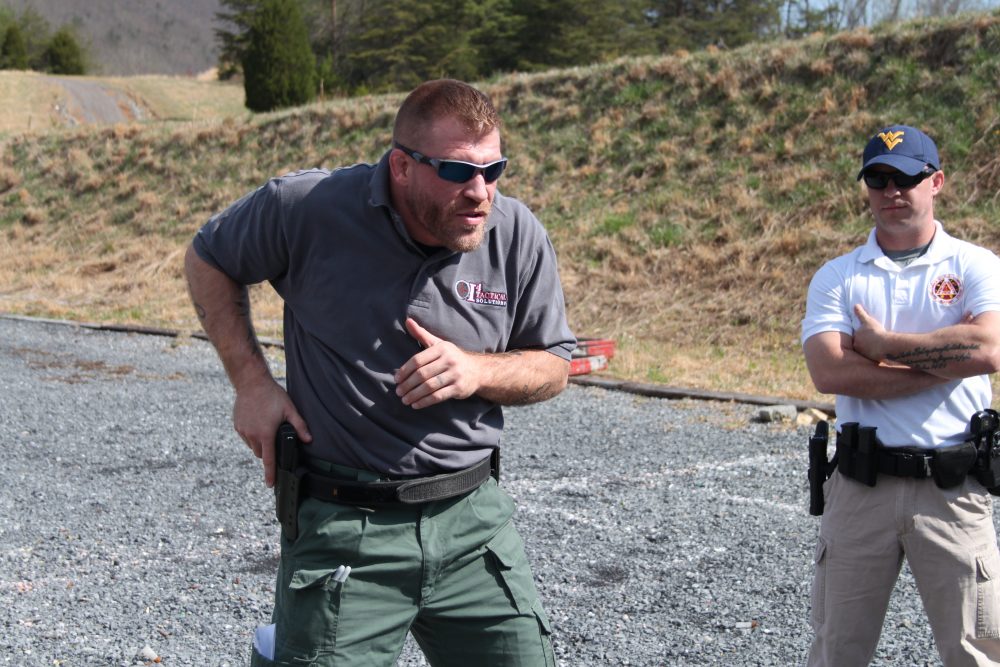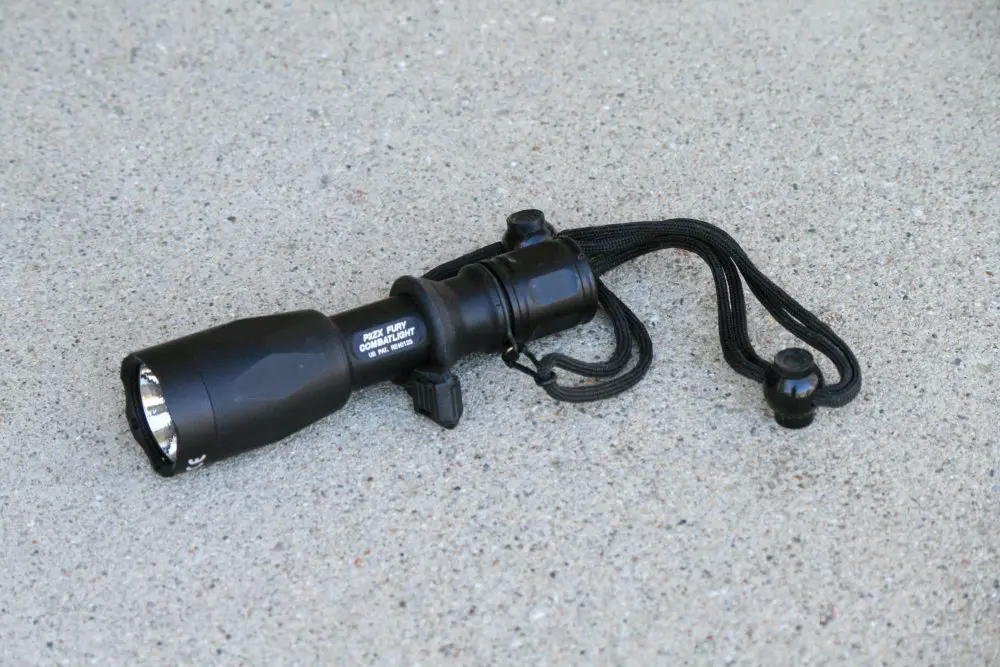Lyman Cyclone Rotary Tumbler comes complete with pair of sifter trays, five pounds of stainless steel media pins, and sample of Lyman Brass Cleaning Solution.
When I began reloading in 1976, my department used .38 Special/.357 Magnum revolvers. Naturally, this was the first cartridge I reloaded. After a few hundred rounds, I started seeing scratch marks on my cases. I sent the die to RCBS, which sent a replacement die with a note asking how long I tumbled my brass to get them clean before resizing them.
What?!
This was years before Al Gore claimed he invented the Internet, and I had no idea what a tumbler was. I sought advice from knowledgeable sales staff (now pretty much a thing of the past), who turned me on to the Thumler’s Tumbler—a rotary tumbler used to polish rocks and gems.
I used the Thumler’s Tumbler for years. Many handloaders still use them. Numerous models can be used with either wet or dry media.
Lyman Cyclone can be set from zero to three hours and features automatic shutoff.
Table of Contents
VIBRATORY TUMBLERS
In the mid 1980s, I began using the new (at the time) vibratory tumblers. My first was a Lyman Turbo 600, and it’s still in use today. The Turbo 600 can polish up to 175 .38 Special cases and is good for comparatively small quantities of brass or for folks with limited space.
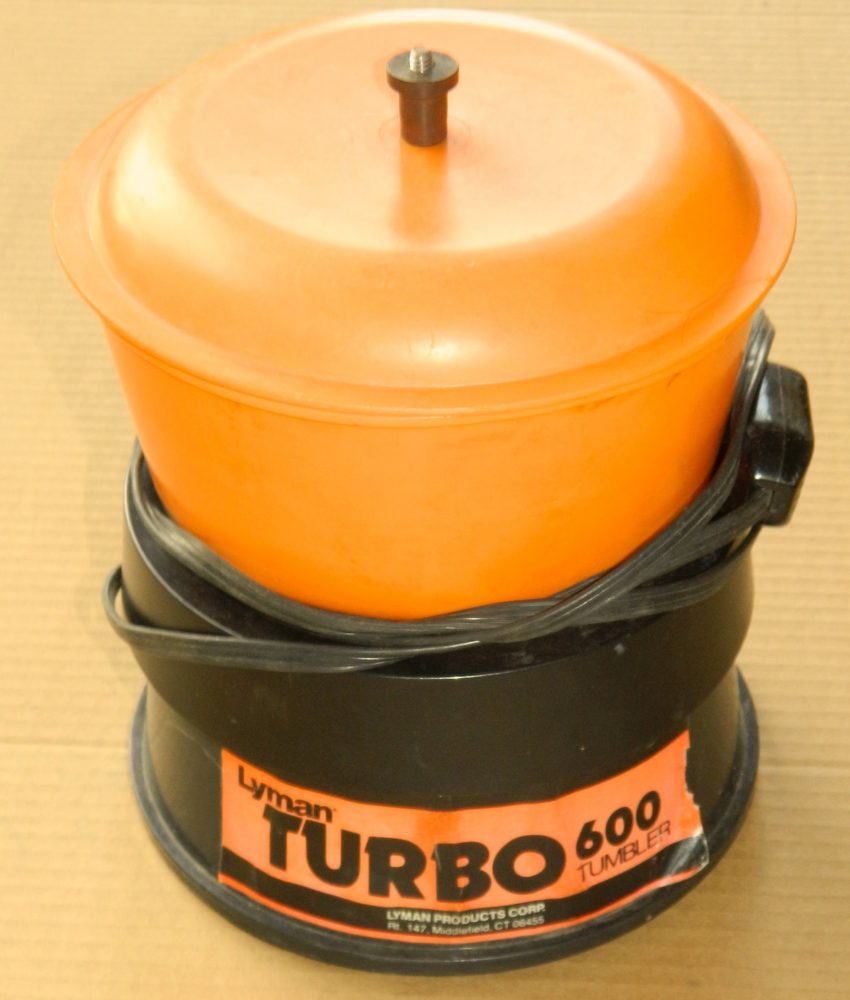
In the late 1990s, I moved up to a Dillon CV-500. (This unit is no longer available, replaced by the slightly larger CV-750.) This tumbler has a large bowl capable of about 500 .45 cases.
With carbide pistol dies, an hour or two vibrating in dry media makes most cases ready to load. For this step, I normally use crushed walnut shell with no polishing compound added.
With rifle or other dies requiring lubricant, my SOP is more complicated. First I size and trim them if necessary. Next I put them in a solution to remove the sticky lubricant. I use concentrated Dawn detergent and water. After the cases dry inside and out, I put them back in the tumbler for polishing. That should do for most applications. But I frequently run them through a cycle of crushed walnut shell with a polishing compound, followed by a cycle of untreated crushed corncob for a lustrous finish. The process is time consuming, but the end results are worth the effort.
It is worth noting at this point that the main purposes of tumbling are to reduce wear on costly dies and to ensure proper functioning in firearms. The outward aesthetics are secondary to everything else.
Cyclone’s drum is rubber lined to protect brass and provide quieter running.
WET PIN TUMBLERS
I was first exposed to a rotary tumbler using a combination of water, polishing solution, and stainless steel pins at the Lyman Products booth during the 2016 SHOT Show. I was impressed enough to place an order for their new Cyclone Rotary Tumbler.
The Cyclone comes with a large rubber-lined drum that holds up to 1,000 .223 cases (more on this later). The rubber lining not only protects the brass but also offers very quiet operation. The drum has a large end cap that makes loading and unloading it a snap. The cap consists of an inner cap with rubber gasket and an outer cap that tightens the inner cap down snugly.
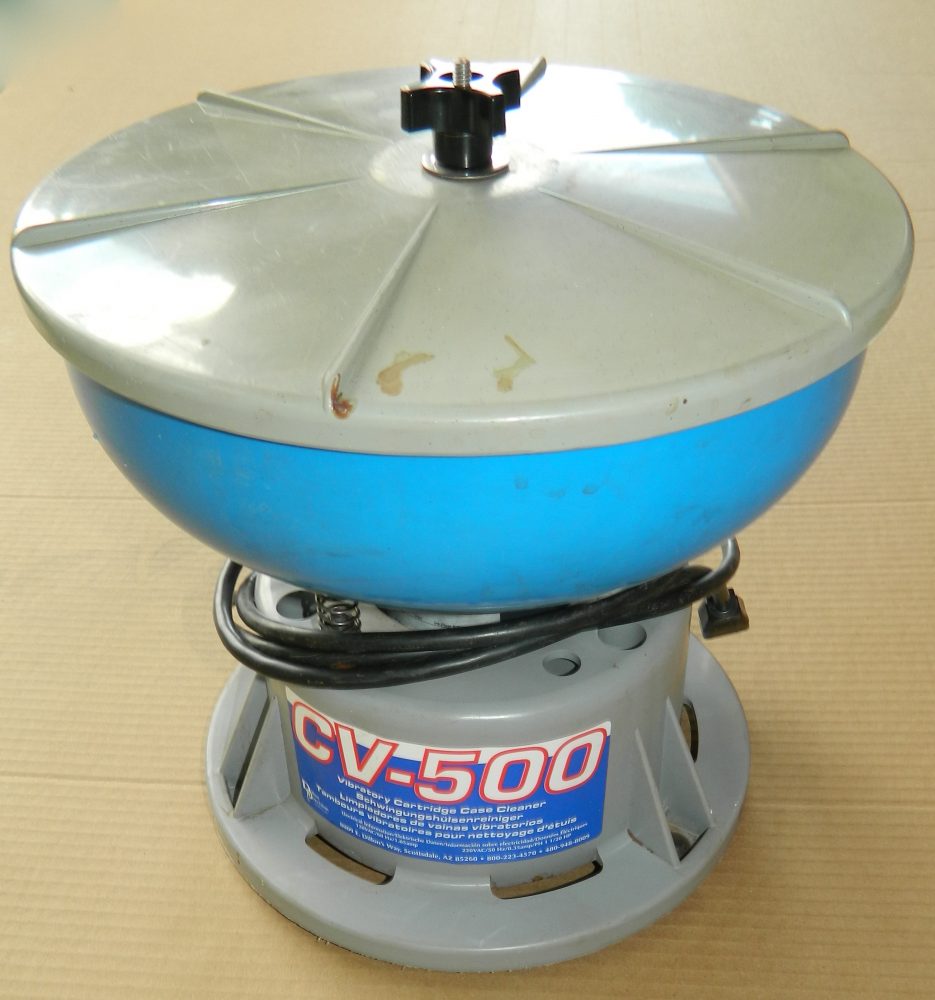
The heavy-duty plastic base the drum sits on is very sturdy. One thing that I appreciate about this unit is the fact that the power cord can be unplugged and stored in the drum when not in use. No more loose cords or tediously wrapping them around the tumbler. A built-in timer can set the tumbler to run from zero to three hours and shuts off automatically when the time set has been reached.
The Cyclone comes with a pair of sifter trays. The first tray catches the brass, while the second tray has a very fine screen that catches the pins. Five pounds of stainless-steel media pins and a sample of Lyman Brass Cleaning Solution are also included.
At first I was a bit concerned that the stainless-steel pins would scratch the cases, but I quickly learned that my worries were unfounded.
Although the pins that came with the test tumbler were not completely uniform in size, they averaged .272-inch long and .036-inch in diameter. The length prevents them from binding in the primer pocket. If the cases have been deprimed, the small diameters of the pins allow them to slip through the flash hole, resulting in what appears to be virgin brass. A vibratory tumbler must run many, many hours to even come close.
I found two small problems with the Cyclone.
When the unit first turns on, it leaks a small amount for the first few minutes and then stops. I figure that the cleaning solution foams up and builds some pressure, keeping it from leaking.
The second “problem” is due to the way the rubber lining fits around the drum. A gap is left at the top and bottom of the drum, and cases may become lodged in these gaps.
Here with approximately 400 .223 cases, Dillon CV-500 tumbler has a large bowl for cases and media.
Earlier I mentioned that Lyman claims the drum holds 1,000 .223 cases. While this number is technically accurate, 1,000 cases fills the drum to the top and doesn’t let the cases rotate freely in the cleaning solution. I have found that filling the drum about halfway full works more efficiently.
CLEANING/POLISHING SOLUTION
Lyman Brass Cleaning Solution works great but may be on the expensive side if the Cyclone is used a lot. A more cost-effective solution can be made from Lemi Shine, a hard water softener made of citric acid, and Dawn dishwashing detergent, which cleans the brass.
My own solution consists of adding about ½ teaspoon of Lemi Shine and ¾ teaspoon of Armorall Wash & Wax. I add this solution to the brass and pins, and then add water to a few inches above the mix. This mix seems to prevent the cases from tarnishing when stored.
Whether homemade or commercial, a brass/media separator is almost a must.
CASE SEPARATION
Dry or wet, you need a way of separating the media and cases. For dry media with a vibratory tumbler, I made a separator by drilling hundreds of holes in the bottom of a three-gallon bucket. I put the homemade separator into a five-gallon bucket, pour in the brass and media from the tumbler, and spin the separator back and forth by the handle. It actually does a pretty good job.
Although Lyman includes the aforementioned sifting trays with the Cyclone, they are the bare minimum. Some cases, notably .45 ACP, rest with the case head down, and it can be a real pain to get the pins out.
I obtained a Lyman Rotary case/Media Separator to make things easier. The brass is poured into one half of the separator, then the other side, and latches together. Turn the crank handle a few times and the media is separated from the cases. Simple.
One thing the Lyman separator has that some brands don’t is a cover for the unit. This keeps all media inside the separator and not on the floor.
Frankford Arsenal Transfer Magnet makes transferring media pins a piece of cake.
Regardless of how careful you are, some of the small pins end up on the ground. One handy accessory is the Frankford Arsenal Transfer Magnet. It’s great for the pins that somehow make their way free from either the tray or the separator. The heavy-duty magnet also makes transferring media pins from the screen separator tray and placing them back into the drum a piece of cake. Pick up the pins and pull a handle to release them into the tumbler’s drum or other storage container. I highly recommend it.
After the cases and media have been separated, to prevent water spots, put the cases on a towel, rub them a bit, and let the sun finish drying them.
A friend who lives in an area with high humidity uses a food dehydrator to dry the cases. Similarly, Frankford Arsenal has a forced-air convection brass dryer that can dry up to 1,000 pieces of .223 rifle brass or up to 2,000 pieces of 9mm pistol brass in under an hour.
Lyman Cyclone does a great job of cleaning and polishing inside, outside, and primer pockets of cases, as shown here with this batch of .357 Magnum.
WRAP-UP
I have really come to like the Lyman Cyclone Rotary Tumbler and now use it almost exclusively. I was so enthusiastic about it that I’ve tumbled about 10,000 .45 ACP cases that were sitting dormant in a couple of five-gallon buckets mostly because tumbling them in a vibratory tumbler was tedious work.
I don’t plan on giving up my vibratory tumblers just yet, but I have relegated them to doing small quantities of brass, such as .30-30.
I started with a rotary tumbler, switched to the vibratory type, and now have come full circle back to rotary.
SOURCES
DILLON PRECISION PRODUCTS, INC.
(800) 223-4570
www.dillonprecision.com
FRANKFORD ARSENAL
(573) 445-9200
www.btibrands.com
LYMAN PRODUCTS CORP.
(800) 225-9626
www.lymanproducts.com
THUMLER’S TUMBLER
(800) 225-1017
www.thumlerstumbler.com


